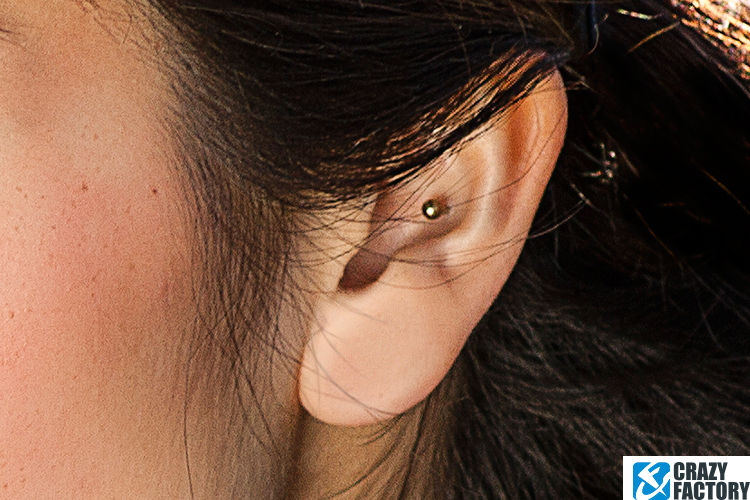Conch-Piercing (Inner Conch, Outer Conch)/en: Unterschied zwischen den Versionen
(Die Seite wurde neu angelegt: „frame|alt=Conch-Piercing|link=https://www.crazy-factory.com/en-US/p/Piercings/Labrets/GPMLB/“) |
|||
| (Eine dazwischenliegende Version desselben Benutzers wird nicht angezeigt) | |||
| Zeile 5: | Zeile 5: | ||
<i>Type of piercing</i> | <i>Type of piercing</i> | ||
< | <br>The conch takes its name from the spiral shape of the ear, and may be an inner or outer piercing. The outer conch is easily confused with the helix, but the latter is placed further towards the outside or top of the ear. | ||
<br> | <br> | ||
<br><b> | As the cartilage of your ear is very tough, and enlarging piercings here is very painful, the piercing is done using a needle or punch of the desired final size. | ||
<br><b> | <br><br> | ||
<br><br> | <b>Healing:</b> A needle-pierced conch will normally heal in three to six months. If it’s punched, it will heal slightly faster, in two to five weeks. | ||
<br><br> | |||
<b>Risks:</b> As the cartilage in your ear is very sensitive, conch piercings are not always easy. It’s not unusual for them to become inflamed and cause pain, and a bad infection may spread to the facial nerve and paralyse your face. You should therefore see a doctor immediately if you see any signs of infection. | |||
<br><br> | |||
You’ll find a wide choice of studs for your conch piercing [https://www.crazy-factory.com/de/c/Schmuck/Ohrringe/ HERE]! | |||
Aktuelle Version vom 24. September 2021, 10:33 Uhr
Conch piercings
Type of piercing
The conch takes its name from the spiral shape of the ear, and may be an inner or outer piercing. The outer conch is easily confused with the helix, but the latter is placed further towards the outside or top of the ear.
As the cartilage of your ear is very tough, and enlarging piercings here is very painful, the piercing is done using a needle or punch of the desired final size.
Healing: A needle-pierced conch will normally heal in three to six months. If it’s punched, it will heal slightly faster, in two to five weeks.
Risks: As the cartilage in your ear is very sensitive, conch piercings are not always easy. It’s not unusual for them to become inflamed and cause pain, and a bad infection may spread to the facial nerve and paralyse your face. You should therefore see a doctor immediately if you see any signs of infection.
You’ll find a wide choice of studs for your conch piercing HERE!
